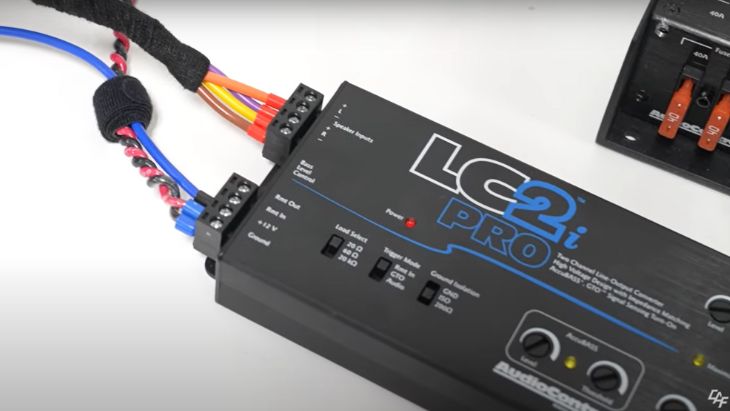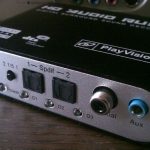When adjusting the gain level on a line out converter (LOC), you should match the LOC gain output with your amplifier’s input sensitivity. What you want is to ensure you send the highest quality signal from the LOC to the amplifier without distorting the LOC output signal. Also, you should ensure the LOC output signal does not exceed the maximum input gain of your aftermarket amplifier.
For instance, if your amp has a maximum input sensitivity of 5 volts, you should ensure the output from the LOC does not go beyond 5 volts. To achieve this, you need to set the gain controls on your LOC properly. In this article, we will show you how to adjust line out converter gain in a few, simple steps.

How to Adjust LOC Gain
Before you start to adjust the gain on your line out converter, do not connect the RCA outputs of the LOC to the amp. If you have already connected the LOC to your amp via RCA, disconnect the RCA before proceeding.
You should only have the LOC connect to the factory radio via the speaker-level inputs. Also, the LOC should be converted to the 12 volts source and ground. If you are not using a remote turn on mechanism to sense an incoming signal to the LOC, you will need to connect a 12 volts trigger wire. The trigger wire should be connected to the “Remote In” terminal of your LOC. Doing so will allow it to turn on automatically upon sensing an incoming signal from the factory radio.
Here are the steps to follow to adjust line out converter gain:
Step 1– First, set the gain level on your LOC to a minimum.
Step 2– Set the audio settings on your factory radio to the flat/center position for all options available such as balance, fader, treble, and bass. Turn off any signal processing features such as the preset EQ if available.
Step 3– Set the volume on your factory radio to about 75%. Then start playing music. In case you are using Bluetooth as the audio source via the factory radio, ensure you set the Bluetooth device volume to the maximum.
Step 4– Next, turn up the gains on the LOC. To do this, turn up each gain slowly until the maximized light flickers. Once it flickers, turn down the gain a little until the maximized light turns off. Some LOCs come with a maximized light that flickers to warn you that you are about to distort the converter output. It is useful for someone who does not have a voltmeter to test the output signal.
For some LOCs, a clipping light turns on as you adjust the gain up. The clipping light warns you that you are about to clip the output signal. Once the clipping light turns on, turn down the gain level slowly until the light turns off.
If your LOC does not have a clipping light or maximized light to warn you that you are exceeding the output signal voltage, then use a voltmeter. Simply test the voltage of the output signal on your LOC while adjusting the gain. Stop turning the gain up once you reach the maximum voltage supported by the amp input. Most amps take an input signal of between 4 to 6 volts.
Step 5– Turn off the factory radio. Then connect the RCA from the LOC to the amplifier. When connecting the RCA, ensure the input sensitivity or gain controls on your amp are turned down. That way, the amp will take the highest input signal from the LOC.
Step 6– Upon connecting your line out converter to the amp, turn on the factory radio and play some music. If you turn its volume up and feel it is not loud enough, turn up the gain/input sensitivity on the amp until you get the loudness you want.
Summary
By learning how to adjust line out converter gain properly, you will send the highest quality signal from the factory head unit to the amp via the LOC. If you fail to adjust the LOC gain properly, you may send a distorted signal to the amp, which will result in poor sound quality. Thus, take your time to follow the outlined steps in this article for the best sound quality when playing audio from a factory radio.
Michael Evanchuk is a San Francisco-based sound engineer with 20 years’ experience installing, troubleshooting, and repairing commercial, automotive, and household sound equipment. Evanchuk owns an auto stereo center, where he offers highly competitive car audio installation and repair services. He has written dozens of articles on different sound engineering topics, all of which have been published in leading journals, blogs, and websites.





